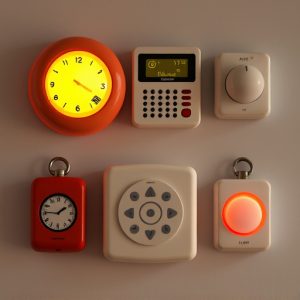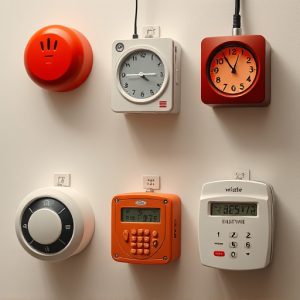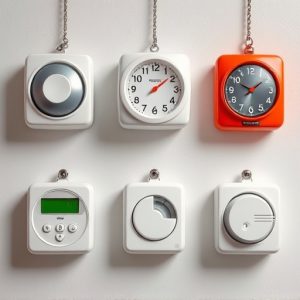Personal Safety Devices: Protecting You with Powerful Alarms
Personal alarm devices are crucial tools for individual safety, offering a simple yet effective solu…….
Personal alarm devices are crucial tools for individual safety, offering a simple yet effective solution in emergencies. They emit powerful Personal Alarm Sounds within a specific Coverage Area, alerting nearby individuals or emergency services. Devices vary from basic wearable alarms to advanced models with features like automatic fall detection and GPS tracking. When choosing an alarm, key factors include sound intensity, coverage area, ease of use, water resistance, and long battery life. Real-life stories highlight their effectiveness in diverse scenarios, from hiking to home security. Future advancements focus on improving Personal Alarm Sound Coverage Area through advanced algorithms and directional sound projection for better communication during emergencies.
In today’s world, personal safety is paramount, especially during unexpected emergencies. This comprehensive guide explores essential devices designed to ensure your security and well-being: personal alarm systems. From understanding their critical role in self-defense to uncovering diverse types with unique features, we demystify these tools. We’ll guide you through the selection process, highlighting key considerations. Additionally, real-life stories will illustrate their effectiveness. Finally, we glimpse into future trends, ensuring you’re prepared for an ever-evolving landscape of personal safety technology, focusing on essential aspects like Personal Alarm Sound and Coverage Area.
- Understanding Personal Safety Devices: Why They're Essential
- Types of Personal Alarm Systems and Their Features
- Key Factors to Consider When Choosing a Personal Alarm
- Effective Use Cases and Real-Life Stories of Personal Alarms
- Future Trends in Personal Safety Technology
Understanding Personal Safety Devices: Why They're Essential
Personal safety devices are crucial tools designed to ensure your well-being and provide an extra layer of protection in emergency situations. These devices, often compact and easily portable, emit a powerful personal alarm sound that can attract attention and deter potential threats. The key advantage lies in their coverage area; they can alert nearby people or even emergency services within a specified range, ensuring swift assistance.
Whether you’re facing a mugging attempt, getting lost in an unfamiliar place, or experiencing any form of distress, these devices offer a simple yet effective way to signal for help. Their compact design and user-friendly functionality make them accessible to everyone, empowering individuals to take charge of their safety and quickly gain assistance when needed most.
Types of Personal Alarm Systems and Their Features
Personal alarm systems come in various types, each with unique features designed for different needs and situations. One common category is the personal emergency alarm device, often worn as a necklace or bracelet, that emits a loud and attention-grabbing personal alarm sound when activated. These devices typically offer a wide coverage area, allowing them to signal help from a distance, especially in public spaces or during outdoor activities.
Features can include automatic fall detection, which triggers an alert if the wearer experiences a sudden impact or lack of movement, and long-range communication capabilities that connect directly to emergency services or loved ones. Some advanced models also incorporate GPS tracking for accurate location identification, ensuring swift response times.
Key Factors to Consider When Choosing a Personal Alarm
When selecting a personal alarm, understanding key factors ensures your safety and peace of mind. One of the primary considerations is Personal Alarm Sound: opt for a device with a loud, piercing tone to attract attention quickly. The Coverage Area is also critical; choose an alarm that offers sufficient range to alert others nearby in case of an emergency.
Additionally, consider the ease of use and accessibility features. A simple, easy-to-activate alarm is ideal, especially if you’re less mobile or have limited strength. Water resistance and long battery life are benefits worth considering for outdoor activities or prolonged use.
Effective Use Cases and Real-Life Stories of Personal Alarms
Personal alarms have proven their worth in countless emergency situations, offering a simple yet effective solution for personal safety. One of the key strengths lies in their ability to attract attention and alert bystanders or nearby authorities quickly. Whether it’s a sudden attack, an unexpected fall, or getting lost in a crowded place, the loud and distinct personal alarm sound can break through the chaos and send out a distress signal. These alarms are designed to be easily operable, even in times of panic, ensuring users can activate them swiftly.
Real-life stories highlight their effectiveness. For example, a hiker who experienced a severe fall on a remote mountain trail was able to use her personal alarm to signal for help. The loud sound pierced the silence, eventually leading rescue teams to her location. Similarly, an elderly individual, facing a potential intruder in her home, activated her personal alarm, startling the intruder and enabling her to escape unharmed. These narratives underscore the versatility of personal alarms within their sound coverage area, making them indispensable tools for diverse emergency scenarios.
Future Trends in Personal Safety Technology
The future of personal safety technology promises exciting innovations aimed at enhancing coverage area and effectiveness in emergency situations. One prominent trend is the integration of advanced algorithms and machine learning into personal safety devices, enabling them to predict and anticipate potential dangers more accurately. These smart systems can analyze patterns and behaviors to detect unusual activities or changes, triggering alerts even before an individual realizes they’re in harm’s way.
Additionally, there’s a growing focus on expanding personal alarm sound coverage area and improving audio technology. Future devices may utilize directional sound projection, ensuring the alarm is heard clearly and distinctively over ambient noise, even in crowded or chaotic environments. This could be crucial in public spaces, where clear communication is essential for effective emergency response coordination.
Personal safety devices, particularly personal alarm systems, are invaluable tools for emergency situations. By understanding their functionality and choosing the right device based on key factors like sound intensity, coverage area, and durability, individuals can empower themselves to protect against potential threats. As technology advances, future trends in personal safety technology promise even greater capabilities, ensuring that everyone remains safe, both indoors and out.


